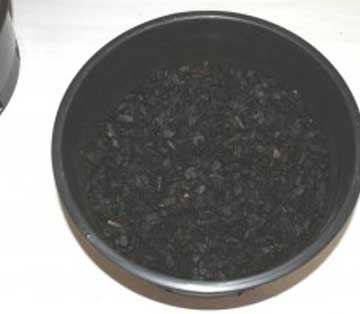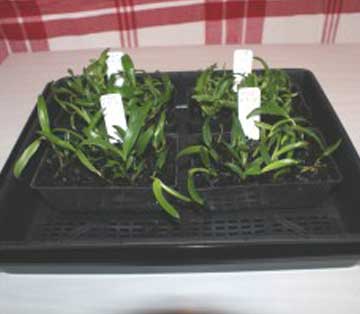Preparation of Materials
1.Sieve some fine pine bark ( 3-5 mm ) to remove any dust and fill a plastic pot with it. Pour boiling water over the bark to sterilise it and remove any remaining dust. Allow it to cool.
2. Fill another pot with medium pine bark ( 8-10 mm ) and sieve and sterilise in the same way with boiling water.
3. If the seedlings are to be planted into used containers, these will have to be disinfected beforehand and for this job I recommend that you soak them in 10% White King ( 0.4% Sodium hypochlorite ) for at least half an hour.
4. Lastly, as far as preparations go, fill the pots or punnets to ¼ of their depth with the coarse pine bark for drainage and then cover with a layer of fine pine bark.
















